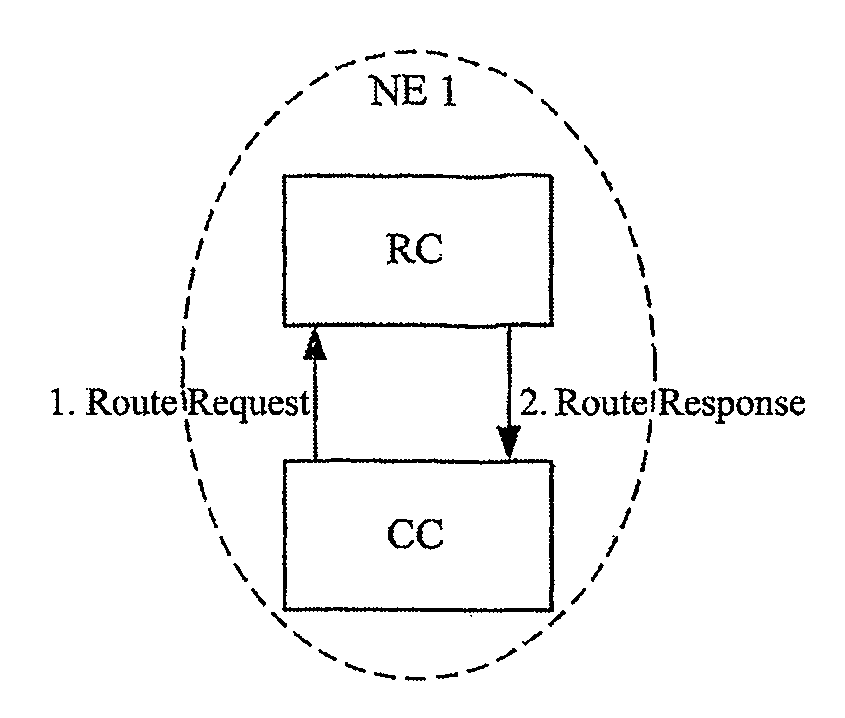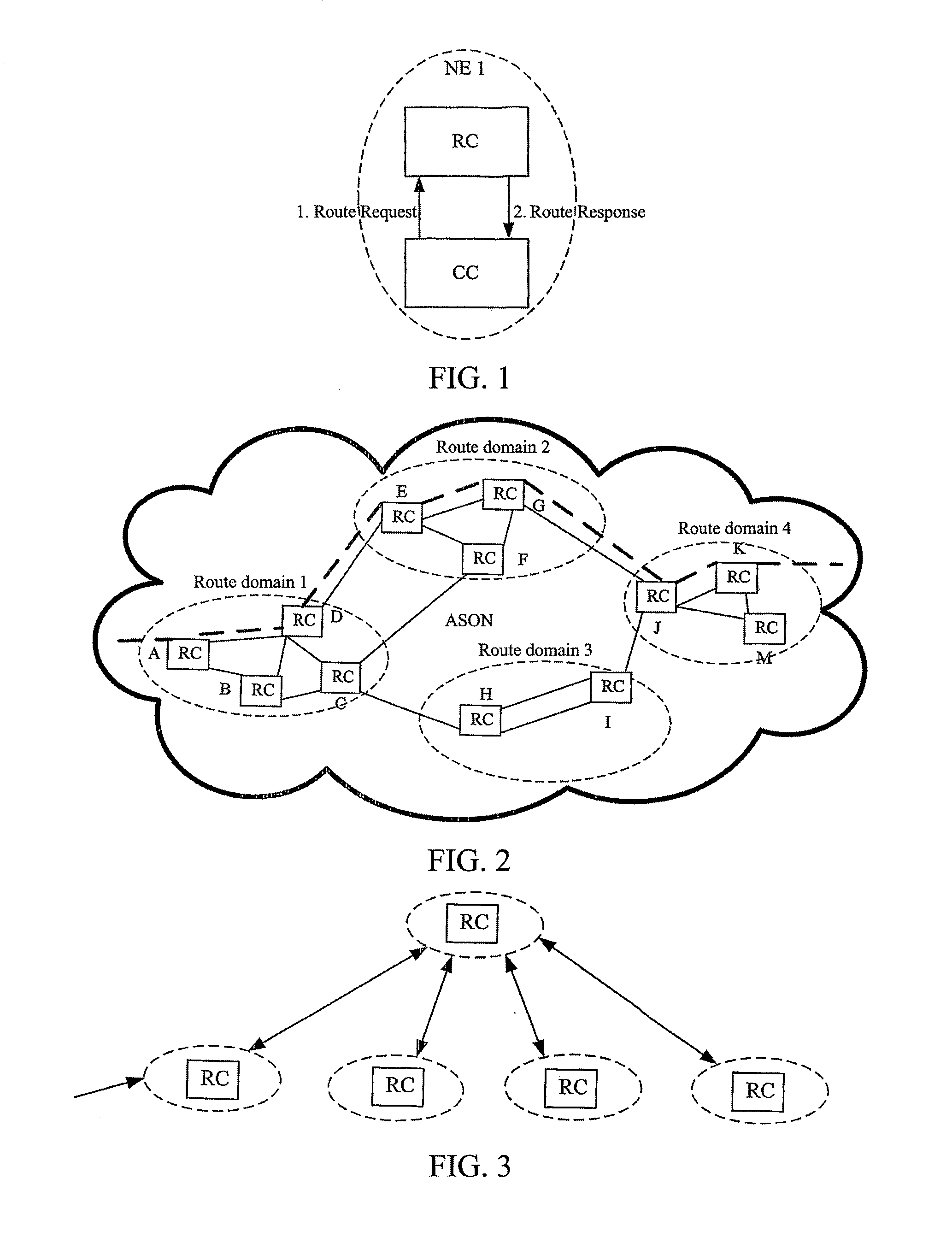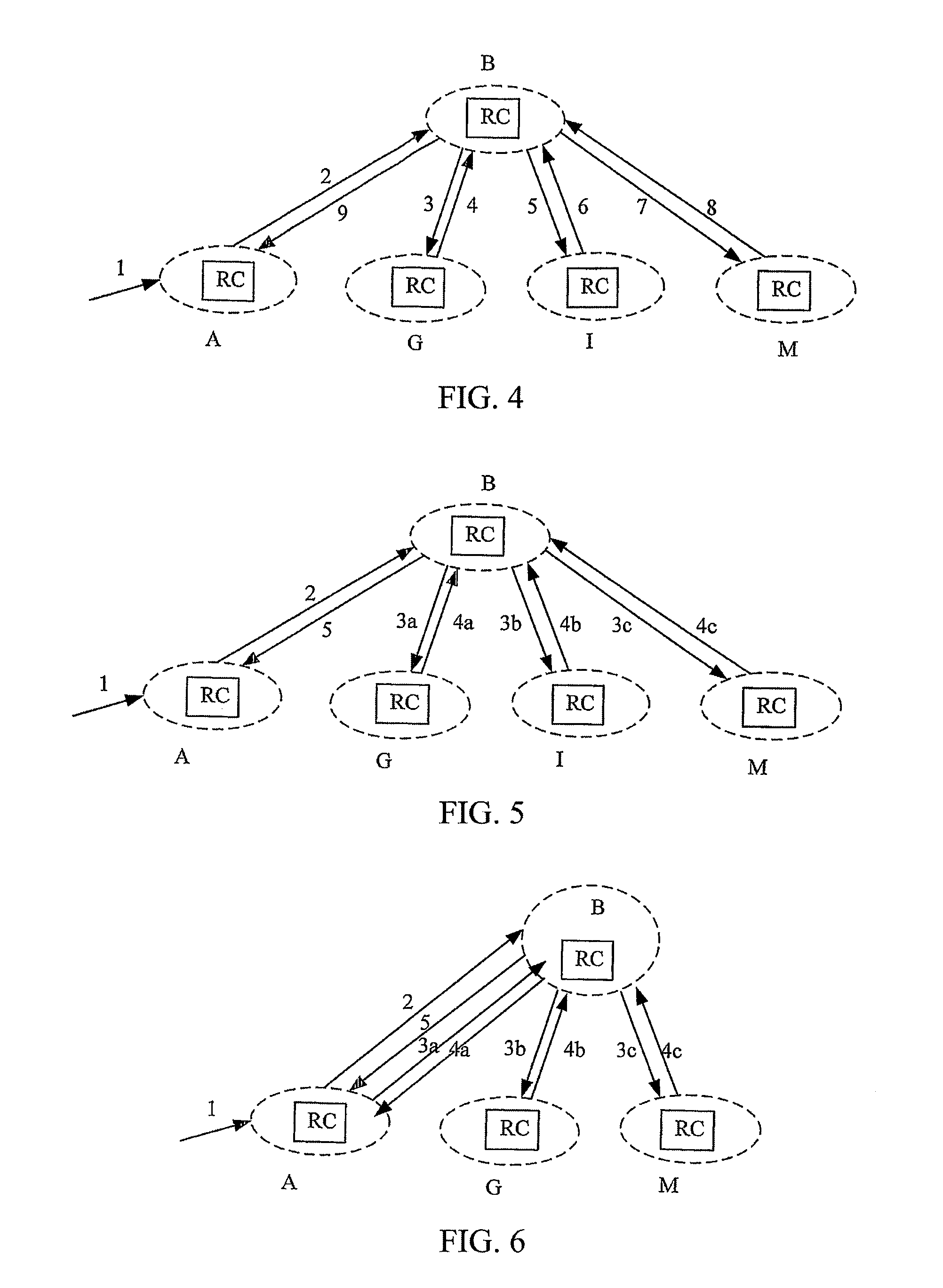Hierarchical Routing Query Method of Automatic Switched Optical Network
- Summary
- Abstract
- Description
- Claims
- Application Information
AI Technical Summary
Benefits of technology
Problems solved by technology
Method used
Image
Examples
first embodiment
[0048]The First Embodiment
[0049]The method of the hierarchical route inquiry in accordance with present embodiment includes the following steps:
[0050]Step 1: the RC of the NE in the local route domain detects and receives a Route Request, then proceeding to the next step;
[0051]The Route Request includes the information of the starting node and the ending node.
[0052]Step 2: according to the Route Request, the RC calls the routing algorithm, such as CSPF, to calculate the route based on the RDB of the current node, and if the complete route is obtained, the calculated route is returned to the requester (such as CC), ending; otherwise, the Route Request is forwarded to the RC of the parent domain, and proceeding to the next step;
[0053]Step 3: according to the Route Request, the RC of the parent domain calls the routing algorithm to calculate the route based on the RDB of the current node, and if the complete route is obtained, the route is returned to the requester, ending; otherwise, ...
embodiment 1
[0058]The embodiment 1 will be described-below in detail by combining FIG. 1, FIG. 2, FIG. 3, FIG. 4 and FIG. 7, taking the route shown with the dot line in FIG. 2 needs to be queried as an example. The ASON NE A in the route domain only has the information of the route domain 1, the ASON NE B is the representative NE for the route domain 1, while the ASON NE G for the route domain 2, the ASON NE I for the route domain 3, the ASON NE M for the route domain 4.
[0059]The specific steps are as follows:
[0060]Step 1: The RC of the each ASON NE in the route domains 1, 2, 3 and 4 checks the Route Request. The RC of the NE A in the route domain 1 receives the Route Request, and the starting node is A and the ending node is K, and proceeding to the next step;
[0061]Step 2, the RC of the NE A calls the routing algorithm according to the Route Request to calculate the route based on the RDB of the current node, and if the complete route can not be obtained since the information in the RDB of the...
second embodiment
[0066]The Second Embodiment
[0067]The implementation of the second embodiment can be obtained by partially modifying the related steps of the first embodiment, and the second embodiment includes the following steps:
[0068]Step 1: after the RC of the related ASON NE in the local route domain detects and receives a Route Request, proceeding to the next step;
[0069]Step 2: according to the Route Request, the RC calls the routing algorithm to calculate the route based on the RDB of the current node, and if the complete route is obtained, the route is returned to the requester, ending; otherwise, the Route Request is forwarded to the RC of the parent domain, and proceeding to the next step;
[0070]Step 3: according to the Route Request, the RC of the parent domain calls the routing algorithm to calculate the route based on the RDB of the NE, and if the complete route is obtained, the route is returned to the requester through the RC which launches the Request, ending; otherwise, the Route Req...
PUM
 Login to View More
Login to View More Abstract
Description
Claims
Application Information
 Login to View More
Login to View More - R&D
- Intellectual Property
- Life Sciences
- Materials
- Tech Scout
- Unparalleled Data Quality
- Higher Quality Content
- 60% Fewer Hallucinations
Browse by: Latest US Patents, China's latest patents, Technical Efficacy Thesaurus, Application Domain, Technology Topic, Popular Technical Reports.
© 2025 PatSnap. All rights reserved.Legal|Privacy policy|Modern Slavery Act Transparency Statement|Sitemap|About US| Contact US: help@patsnap.com



